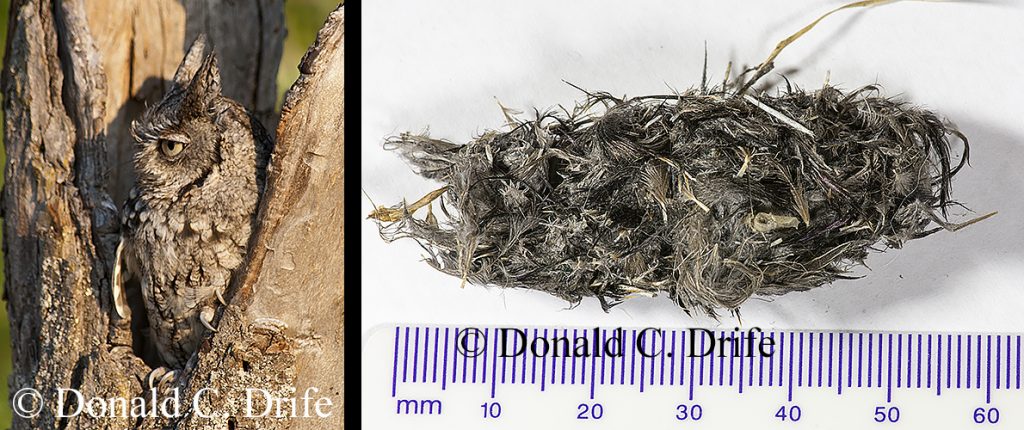
I am “social distancing” myself because of the COVID-19 virus. My nature observations are limited to my neighborhood, reminding me that I am surrounded by nature.

I found an owl pellet in my front “lawn.” I see or hear a Great Horned Owl in my yard a few times a year. Eastern Screech-owls nest here. The pellet I found was about 2-inches long, too small to be from a Great Horned Owl. Owls swallow their prey whole and regurgitate undigested feathers, bones, fur, and the hard parts of insects. Dissecting pellets reveals part of the diet of an owl. It does not show soft-bodied animals such as worms or soft-shelled insects. Eastern Screech-owls eat small birds, small mammals, worms, insects, frogs and even crawfish. My pellet contained feathers and the upper mandible of a bird. From the shape of the mandible I believe it was from a House Sparrow. It is difficult to determine the feather color after they have been in an owl’s stomach.

Eastern Screech-owls live in suburbia and nest in a tree cavity in my yard just outside of Detroit. We once found a family of young owls lined up along a branch over our deck. I think they look undignified when they come at twilight to our birdbath. I often hear them calling in the early evening or just after dark. They do not “hoot” as a stereotypical owl does, but they have a soft, trilling, whinny call. The link at the bottom of the page will take you to Bird-sounds.net and you can listen to their call. If you learn their distinctive call, you might hear it in your own yard.
Learn their call and listen for them. They are nesting now, and when they are on territory, they are more vocal.
Link to Screech-owl call on Bird-sounds.
Copyright 2020 by Donald Drife
Webpage Michigan Nature Guy
Follow MichiganNatureGuy on Facebook
